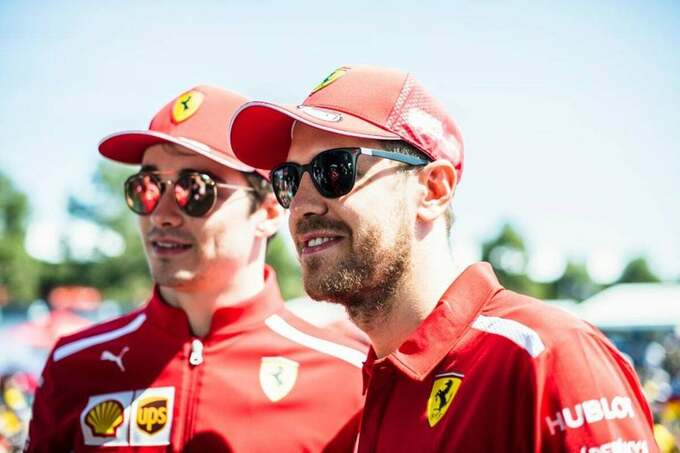“The Scuderia celebrated its 96th anniversary. Thanks to which pilots it has gained such greatness during this time?”, — write: sport.ua
And although the team is currently going through a difficult period, not being able to consistently fight for victories and regular podiums, there is always hope for a breakthrough next year.
And for good reason: despite constant ups and downs throughout its history, in every era there were moments when the Scuderia took an active part in the championship fight. Thanks to this, Ferrari now has the most titles in the Constructors’ Cup and among drivers. This is what made the team great, as well as the pilots who achieved success with it and wrote their names in history.
About those who achieved the greatest greatness in red cars and made Ferrari a legend – in this material.
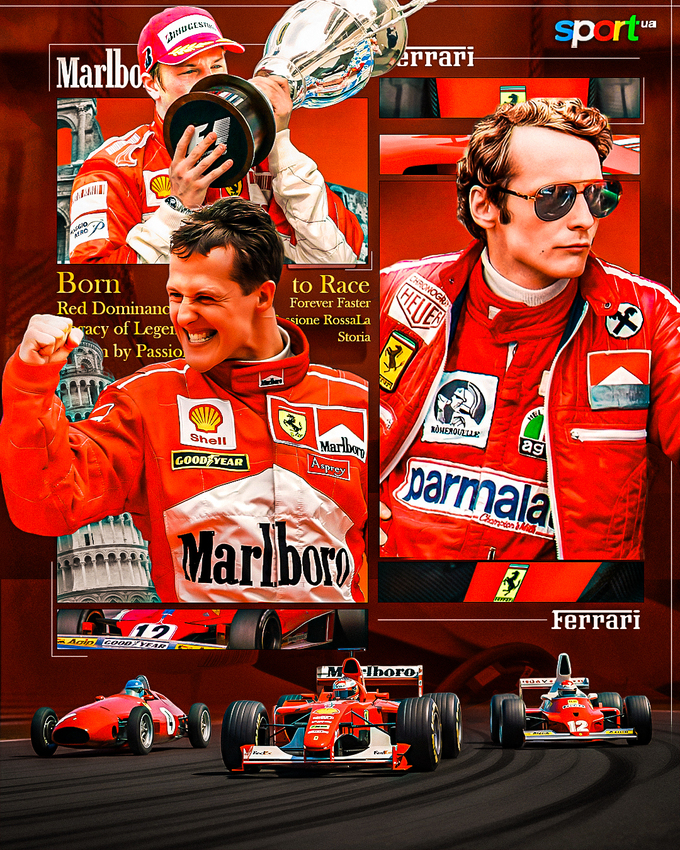
1. Alberto Ascari: the first champion
Alberto Ascari’s career in Formula 1 was short, but extremely productive. He was the son of Antonio Ascari, a famous racing driver of the interwar period, who died at the Montlery circuit in 1926, when Alberto was only seven years old. He began motor racing in 1937 and switched to 4 wheels in 1940, competing in Enzo Ferrari’s Auto Avio Costruzioni. After the Second World War, he hesitated at first, but eventually got into the world of Grand Prix.
In 1949, a year before the creation of the Formula 1 World Championship, Ascari joined Scuderia Ferrari and immediately won a number of prestigious victories, including the Grands Prix of Buenos Aires, Switzerland and Italy.
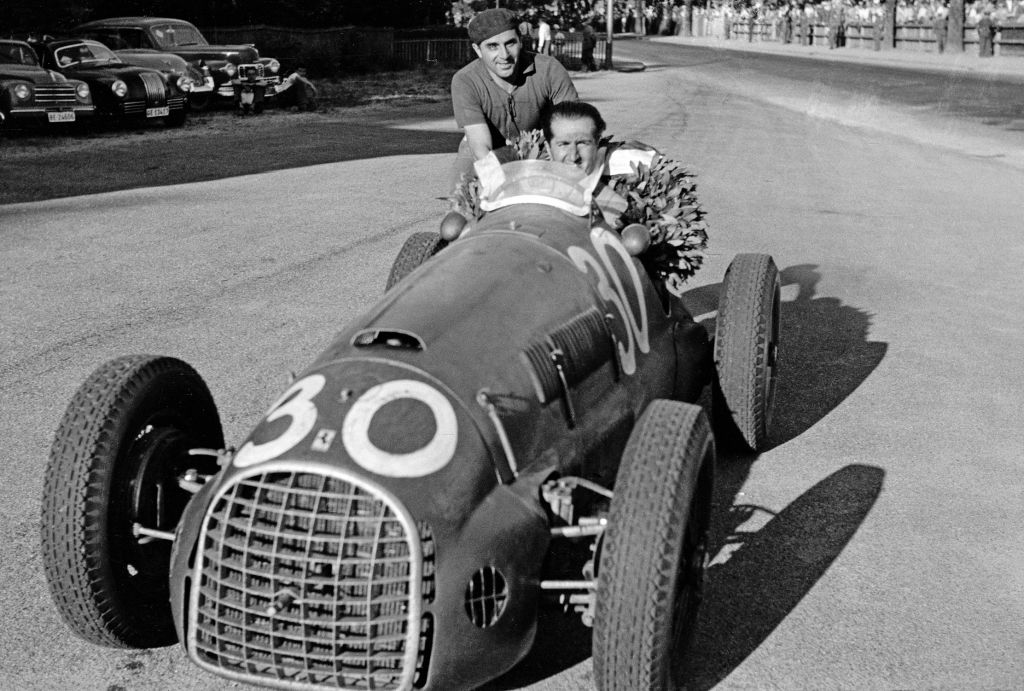 Getty Images/Global Images Ukraine With the advent of the World Championship in 1950, Alberto Ascari immediately became a key driver for Ferrari. At the second round, the Monaco Grand Prix, he gave the Scuderia its first World Championship podium, finishing second after avoiding a massive stall at the start. In his debut season, he won two podiums and became fifth in the championship.
Getty Images/Global Images Ukraine With the advent of the World Championship in 1950, Alberto Ascari immediately became a key driver for Ferrari. At the second round, the Monaco Grand Prix, he gave the Scuderia its first World Championship podium, finishing second after avoiding a massive stall at the start. In his debut season, he won two podiums and became fifth in the championship.
The 1951 season was a turning point, with Ferrari finally competing seriously with Alfa Romeo and Ascari with Juan Manuel Fangio. He won at the Nürburgring and for the first time for Ferrari at his home Monza. Before the season finale, Ascari was just two points behind Fangio, but a poor tire choice in Barcelona left the Italian runner-up.
In 1952, under the new rules, Ferrari created a car in the Ascari style. The results were not long in coming: six victories in six Grand Prix and the first world championship title. In the following season, he confirmed his status: victories in Argentina, the Netherlands and Belgium, Ascari’s stability and bright talent allowed him to win the title early for the second time in a row. This made the Italian the first ever multiple Formula 1 champion.
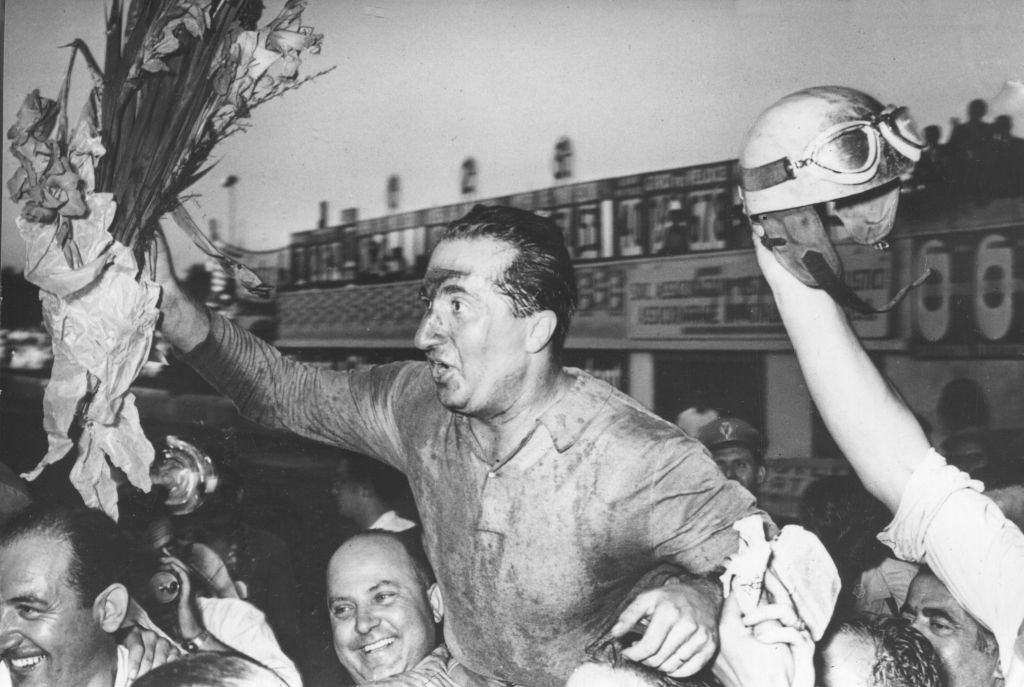 Getty Images/Global Images Ukraine However, further relations with the Scuderia were not so perfect. He left the team due to contract disputes, and in 1955, just four days after his crash at the Monaco Grand Prix, he came to Monza just to watch Ferrari test. Although he wasn’t supposed to go on the track, Ascari asked to do a few laps behind the wheel of a Ferrari 750 sports car, borrowing a helmet from a friend. On the last lap, the car suddenly veered off course in a high-speed turn, overturned and fatally injured the pilot.
Getty Images/Global Images Ukraine However, further relations with the Scuderia were not so perfect. He left the team due to contract disputes, and in 1955, just four days after his crash at the Monaco Grand Prix, he came to Monza just to watch Ferrari test. Although he wasn’t supposed to go on the track, Ascari asked to do a few laps behind the wheel of a Ferrari 750 sports car, borrowing a helmet from a friend. On the last lap, the car suddenly veered off course in a high-speed turn, overturned and fatally injured the pilot.
Alberto Ascari died on May 26, 1955 – at the age of 36, the same age and day of the month that his father died. His death was one of the most tragic in the early history of motorsport and forever cemented his name as a Ferrari legend and one of the greatest drivers of his generation.

2. John Surtes: The only champion on both two and four wheels
John Surtes remains the only driver to have won both the two-wheel and four-wheel world championship. He began his motor racing career in 1951 with Norton and joined MV Agusta in 1956, winning his first title in the top 500cc category. Won both the 500cc and 350cc classes in 1958 and won every race of the season in both classes in 1959. In 1960, Sertes again became the champion in two classes and simultaneously started a career in motorsport in the Cooper T51 in Formula‑2, winning second place.
He made his F1 debut with Lotus and joined Ferrari in 1963–64.
In 1964, John Surtes in a Ferrari 158 started very competitively, although in several races, in particular in Monaco, he had to leave the track. He took his first victory at the Nürburgring, then won the Italian Grand Prix and finished second in the USA. Dramatic events took place at the final Mexican Grand Prix: rivals suffered problems and Sertes finished second to claim his Formula 1 world title. At that time, Ferrari used a blue and white livery due to disputes with the federation.
 Getty Images/Global Images Ukraine 3. Niki Lauda
Getty Images/Global Images Ukraine 3. Niki Lauda
Austrian Niki Lauda was born into a wealthy family, but did not receive the support of his father, so he took out a large loan to start his career in motorsport. He competed in junior formulas, reached Formula 2 and the March team, for which he made his debut in Formula 1 in 1971. Due to a weak car, the 1972 season proved unsuccessful and Lauda even considered leaving racing, but took out a new loan and moved to BRM for 1973. Despite the speed, the team was plagued by technical problems.
The turning point came in 1974 when teammate Clay Regazzoni moved to Ferrari and gave Enzo Ferrari high praise from Lauda. The team signed Nicky, and he immediately became one of the leaders of the peloton. Although a series of relegations to the season finale relegated him to 4th place, his Ferrari debut was a successful one, with Lauda finishing second in the first race in Argentina, and his first victory – at the Spanish Grand Prix – was also Ferrari’s first since 1972.
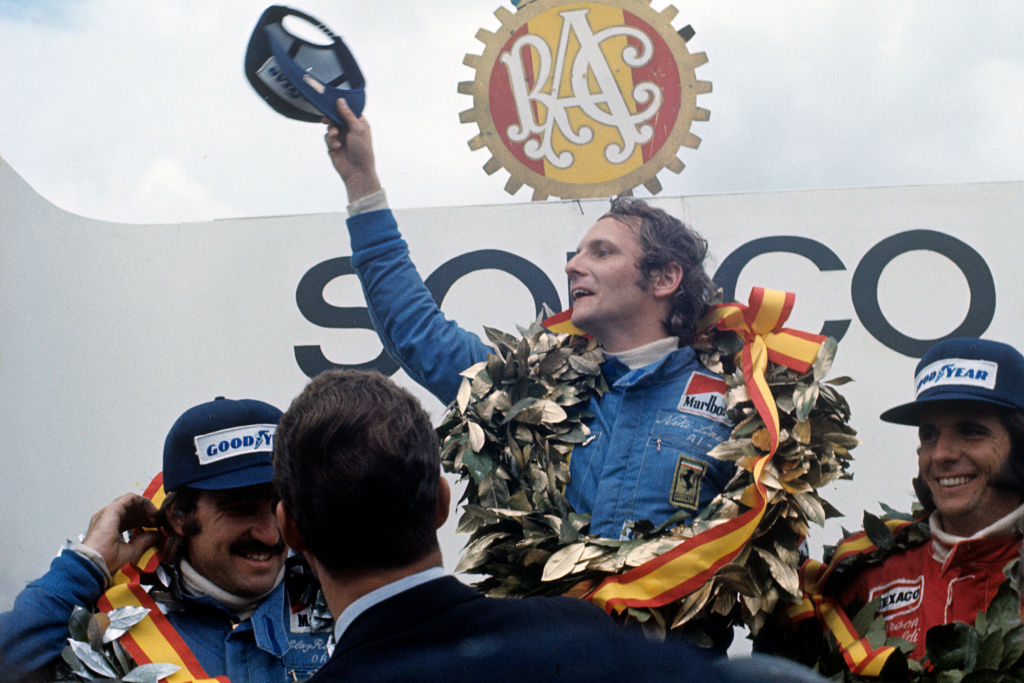 Getty Images/Global Images Ukraine The 1975 season did not start as well as expected, because in the first four races, Niki Lauda could not climb higher than fifth place. But the subsequent update of the Ferrari 312T car changed the course of the championship. Lauda won four of the next five races, and a triumphant season finale at the US Grand Prix gave him his first world title at the age of 26.
Getty Images/Global Images Ukraine The 1975 season did not start as well as expected, because in the first four races, Niki Lauda could not climb higher than fifth place. But the subsequent update of the Ferrari 312T car changed the course of the championship. Lauda won four of the next five races, and a triumphant season finale at the US Grand Prix gave him his first world title at the age of 26.
The following year turned out to be the complete opposite. After a strong start, when in the first 9 stages of 16 Lauda was more than twice ahead of James Hunt in the McLaren, the season suddenly changed – a crash at the Nürburgring almost took his life. Despite everything, after only two races he returned and continued to fight, although he was far from his best form.
The season finale was also tense. In rainy Japan, Lauda decided to retire, and the title eventually went to Hunt – with a difference of just one point. Such a move did not remain without consequences: it significantly cooled his relationship with the team, which until recently was very good.
Fortunately for the Austrian, the 1977 season passed much more calmly on the track. There were practically no real rivals in the tandem of Ferrari and Lauda. Consistent podiums and wins secured him the title in perhaps the best possible way – at the Italian Grand Prix in Monza, where, with strong fan support, he finished on the podium and became the enemy world champion. However, the joy did not last long: the relationship with the team, which was damaged a year ago, showed itself, and Lauda announced during the season that he would leave Ferrari. In the end, he did it even earlier – missing the two final stages.
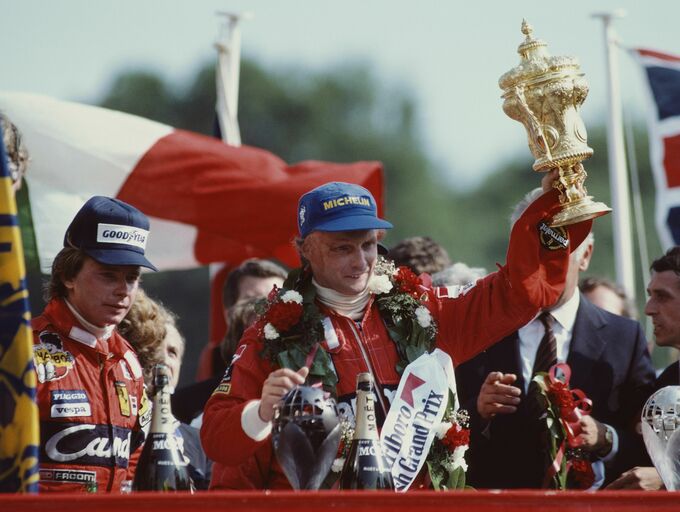
Let the end of the story of the Austrian in the Scuderia turn out to be not too smooth – this does not diminish his influence and scale not only in the history of Ferrari, but also in the whole of Formula‑1. He became the one after whom safety and the consequences of accidents in racing were seriously discussed, showing that even champions can make critical mistakes.
Lauda brought back the World Champion’s Trophy in Maranello – and did it twice. But even after the end of his career, he regularly appeared in the paddock and remained someone who influenced the modern history of Formula 1, in particular, contributed to the arrival of Lewis Hamilton to Mercedes at the beginning of the last decade.
In the future, he had victories and even another title almost 10 years after the first – but already at McLaren. Lauda lived to a respectable age, although he struggled all his life with the consequences of the accident in 1976, and passed away in 2019 at the age of 70.
4. Michael Schumacher
Along with Niki Lauda from the Scuderia, luck also went. By the time of Michael Schumacher’s arrival, almost 20 years had passed since the last title. The last Scuderia champion at that time was Jody Schecter in 1979.
The appearance of the German changed everything. When he joined the Scuderia, he was already a reigning two-time world champion in 1994 and 1995. Before that, Ferrari was in chaos, but Schumacher brought hope and stability that had been missing for a long time. The debut in the Scuderia was encouraging: three victories in 1996 and five in 1997, when he was already claiming the title. However, the 1997 season ended in a scandal in Jerez – Schumacher tried to throw Jacques Villeneuve off the track with a ram in the fight for the championship, for which he was disqualified from the championship that year.
— Formula 1 (@F1) December 7, 2021
1998 – second place, 1999 – leg injury at the British Grand Prix, the only one in his career, although the car could already challenge for the title. And finally came the long-awaited season-2000 and the first title for Ferrari in 21 years. The series followed: 2001-2004 – four more in a row, 2002 – 11 wins from 17 and no podium finishes, 2003 – sixth title, 2004 – 13 wins from 18 and the seventh championship title by a huge margin.
Schumacher was distinguished by exceptional ambition, motivation and discipline. Natural talent, physical training and a racing mind allowed him to make snap decisions, adapt to conditions and work at the limits of his abilities. His feedback to the engineers, especially to technical director Ross Brown, was invaluable.
No one worked for the team with such dedication: he was often at the base in Maranello, supported the staff, inspired and never criticized. He loved Ferrari and the team respected him.
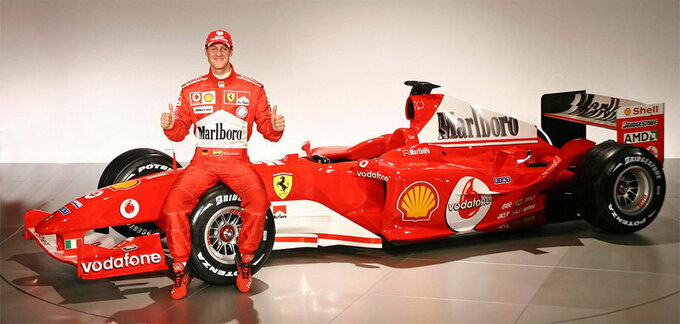
The idyll was broken by the tandem of Fernando Alonso and Renault in 2005-2006, who confidently won championships. This became a signal for Michael: time was playing against him. After the second place in 2006, Schumacher ended his career at the peak – 91 victories, 7 titles and 68 poles. Statistics that any pilot can still only dream about. Except for Lewis Hamilton)
In 2013, after a three-year return to Mercedes and eventual retirement, Schumacher was seriously injured while skiing. His condition remains known only to his family and close circle.
Like Lauda, Michael became a symbol of the era, but reached a much larger scale – his surname became synonymous with the word speed, and the pilot himself is considered by many fans to be the best in history.
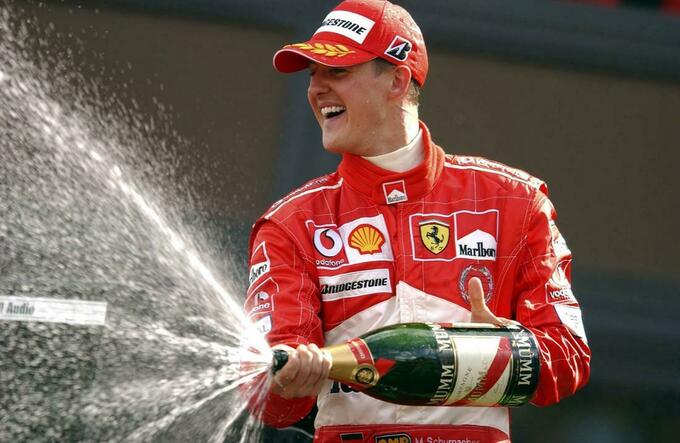
5. Kimi Raikkonen: The Last Champion
The one who replaced the German in Ferrari was Kimi Raikkonen. In 2003, still very young, he fought for the title with Michael Schumacher and lost by just two points while driving for McLaren.
Raikkonen’s old team became the main competitor of the Scuderia and received a serious reinforcement before the start of the 2007 season: Alonso, the current two-time champion and newcomer Hamilton. It is worth admitting that the overall form of the car was stronger, so the title under normal conditions had to be decided by their drivers, and Ferrari had to fight only for individual victories.
Despite this, the start in the new team for Kimi turned out to be perfect: the first race was an immediate victory, and two more podiums in the next two stages. And this is against the background of partner mistakes and fierce competition within the rival team. However, it could not last long: the transition to a new team with a new engine was indicated. Only closer to the end of the season did Raikkonen manage to return to top form and fight for the title.
Even so, with two stages to go it looked like everything was decided, but Hamilton made a mistake during his pit stop, so the battle continued in Brazil at the season finale. And even there, Kimi had to win for the title, and Fernando and Lewis had to finish no higher than third and sixth place, respectively.
Oddly enough, that’s exactly how it all turned out. Raikkonen’s teammate, Felipe Massa, took pole, while Kimi started second and took the lead after the second pit stop. Meanwhile, due to a mistake and problems with the gearbox, Hamilton fell back to the last positions and was no longer able to recover sufficiently.
Raikkonen finished ahead of Massa and Alonso to take the championship by just one point and reclaim the drivers’ and constructors’ title for Ferrari.
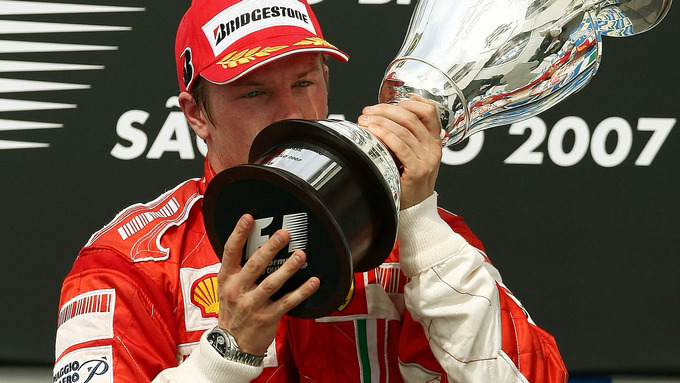
But after that, unfortunately, there were no breakthroughs either in Kim or in other pilots. The Scuderia pilot did not win the championship title for almost 20 years, and the situation in the Constructors’ Cup is not much better – the team’s last victory was in 2008.
Of course, there were close attempts, but none ended in success. Fernando Alonso was less than 10 points short of winning the title for Ferrari in 2010 and 2012. Sebastian Vettel struggled in 2017 and 2018, and this generation the Scuderia started quite dominantly but gradually lost ground.
Last year, the team was close to the title in the Constructors’ Cup, but the less than ideal starting positions and McLaren’s pace left no real chance. There is hope that next year Ferrari will be able to surprise, but whether for the first time is a rhetorical question.
On the eve of the season, the team got stronger: instead of the usual Carlos Sainz, now Lewis Hamilton. The second driver in F1 history to have 7 titles but no podium for a team so far – an anti-record 21 races.
Still, it’s hard to name a team with more influence and significance than Ferrari. In its composition, nine pilots became world champions, but it was those named above who had the greatest influence on the further development of both the team and Formula‑1.
